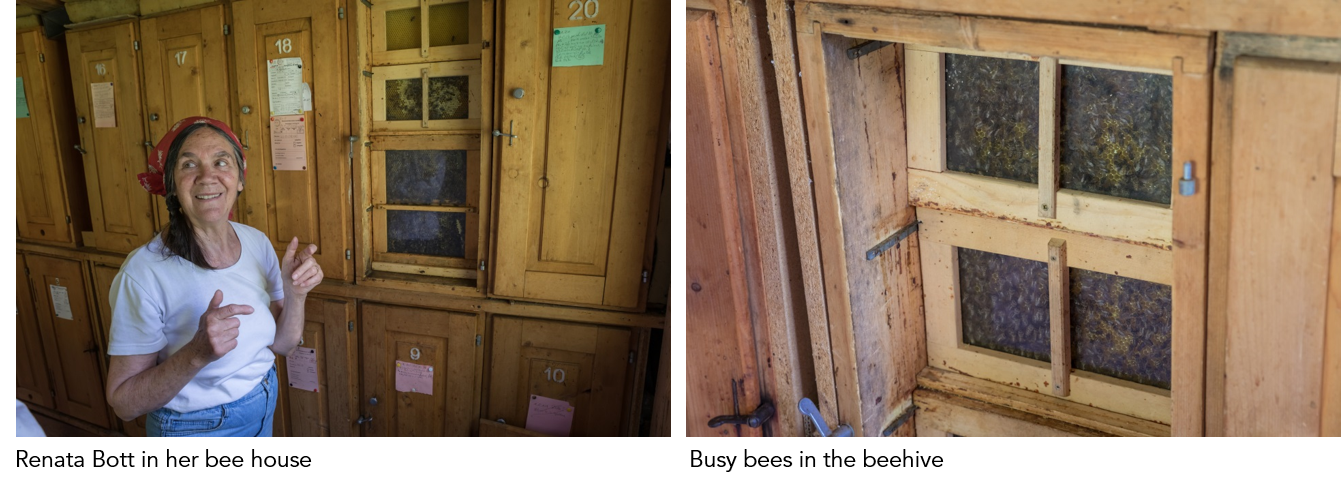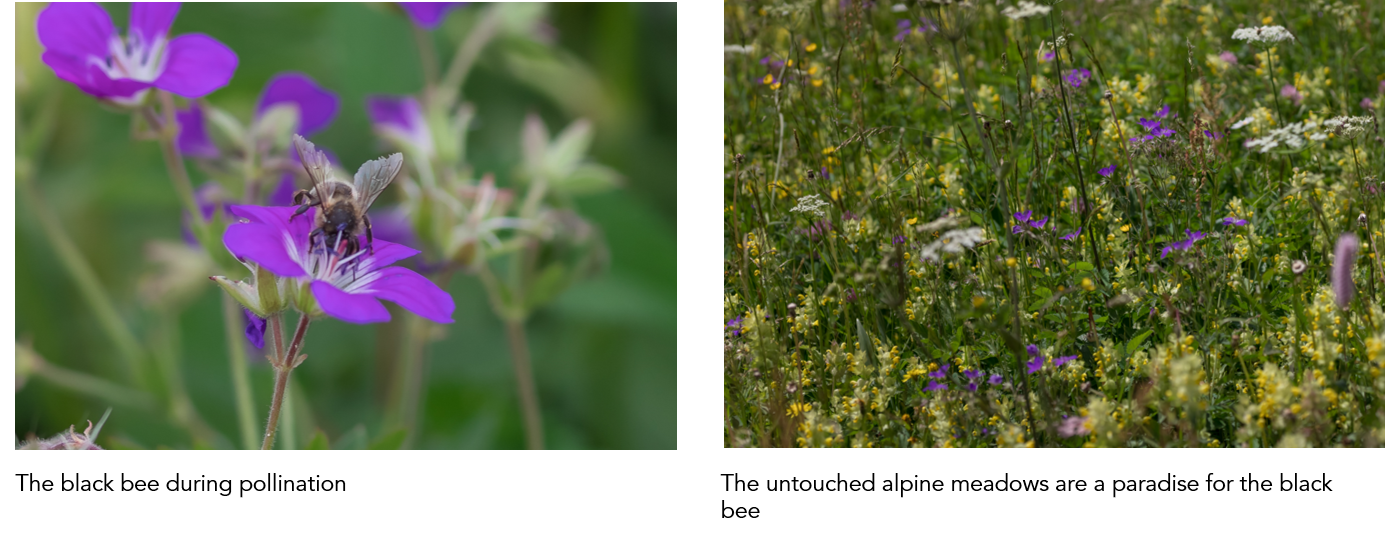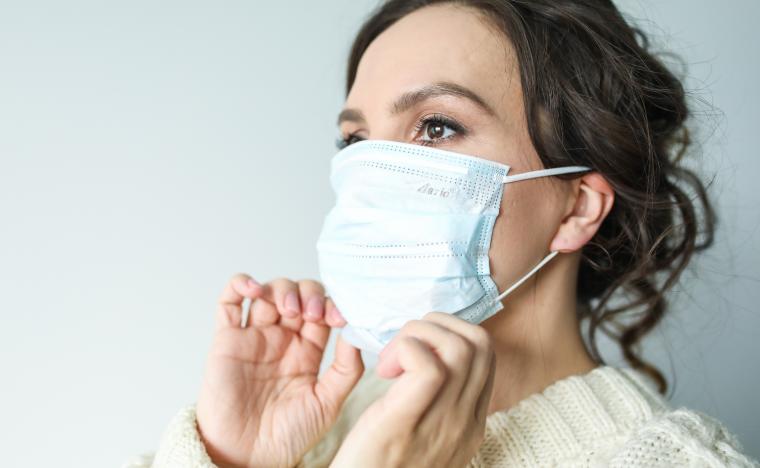Behind the scenes: visit to “queen bee”
Find out more about the special honey we use for our Black BeeOme™.
It hums around the bee house of Renata Bott, idyllically situated at the edge of the forest far away in the Münster Valley at 1660 m a.s.l. Summer is high season for the busy bees which work around the clock.
The bee colony is perfectly organized and resembles a "superorganism" with its own collective intelligence - and the different personalities queen, drones and workers know exactly what to do.
The primary goal of the bee colony is to ensure survival - the workers collect nectar around the clock, raise new larvae and ensure that the queen is satisfied. In summer, they are that busy that they die after only 3 weeks. Every day, however, new larvae hatch from the queen's eggs. If a larva is chosen as queen, it represents the centre of the whole swarm. It is raised with special substantial food and only flies out once or twice in its life to be mated by the male drones. She then spends the rest of her life in the beehive and lays over 1000 eggs a day.

The bee species bred by Renata is a special one, the so-called "dark bee" (Apis mellifera mellifera) belongs to the Pro Specie Rara and is native to the Münster Valley. The bees are slightly taller, more gentle and more resistant than the classic honey bees.
From bee breeding to honey bottling, everything at Renata is still done by hand today. From the honey of the dark bee, Mibelle Biochemistry then produces the active ingredient Black BeeOme™, which harmonises the individual microflora of stressed skin and leads to a healthier and much clearer complexion.
We had the chance to do a short interview with Renata, to find out more about her everyday life around the bee house.

Renata, how did you get into beekeeping?
My husband has been a beekeeper before, so I supported him and built this up further. This bee house has been around for about 20 years now.
What does such a normal day look like with you?
That is very different. Some days, I spend about 10 hours a day in the bee house, checking and taking care of the bees. Especially in spring and summer it’s very busy and a lot of work needs to be done. And then there is also a time when you have to leave the bees alone. In winter, you must let the bees rest, one would disturb them, and they would die if you did something. They are then in a kind of half-hibernation and need rest. A beekeeper must observe carefully – to not disturb the bees, but always do the most necessary things. Often this is a tightrope walk.
What is special about the dark bee?
Nowadays we hear a lot about biodiversity and species conservation, because many species get lost. I think it's good to be able to preserve the dark bee or at least contribute to its conservation. We protect and preserve the bees, and these in turn preserve our flora. Because the dark bee has always been native to these valleys, it is well acclimatized.
What does species-appropriate beekeeping mean, what is important for the bees?
To not disturb the bees but observe and do what is necessary. For example, I don't use antibiotics for my bees, which is very important to me. In addition, my bees are not exposed to smoking pipes. The bees don't like smoke, and honey is also very sensitive to other tastes, so I don't use it.
Your honey is "natural" honey. What does that mean exactly?
The honey is neither heated nor cooled, also not stirred, but remains the same as it comes from the bees. The honey crystallizes naturally after a certain time, this would also happen in the honeycomb. When the mature process comes to an end, the bees cover the honey with a fine layer of wax. This is done by nature, so that it does not flow out and is preserved.
Can you briefly explain what are the most important steps in honey production?
First the bees fly out and bring the collected nectar back to the beehive and store it. The honey needs time to ripen, because often honey also contains water which must evaporate. When the bees start to cover, the honey is ripe. Then I take out the honeycombs and loosen the wax caps with a special fine fork. Then the honey is centrifuged and filtered. Then it must rest before it is filled into glasses. This is the processing of this "liquid gold".










